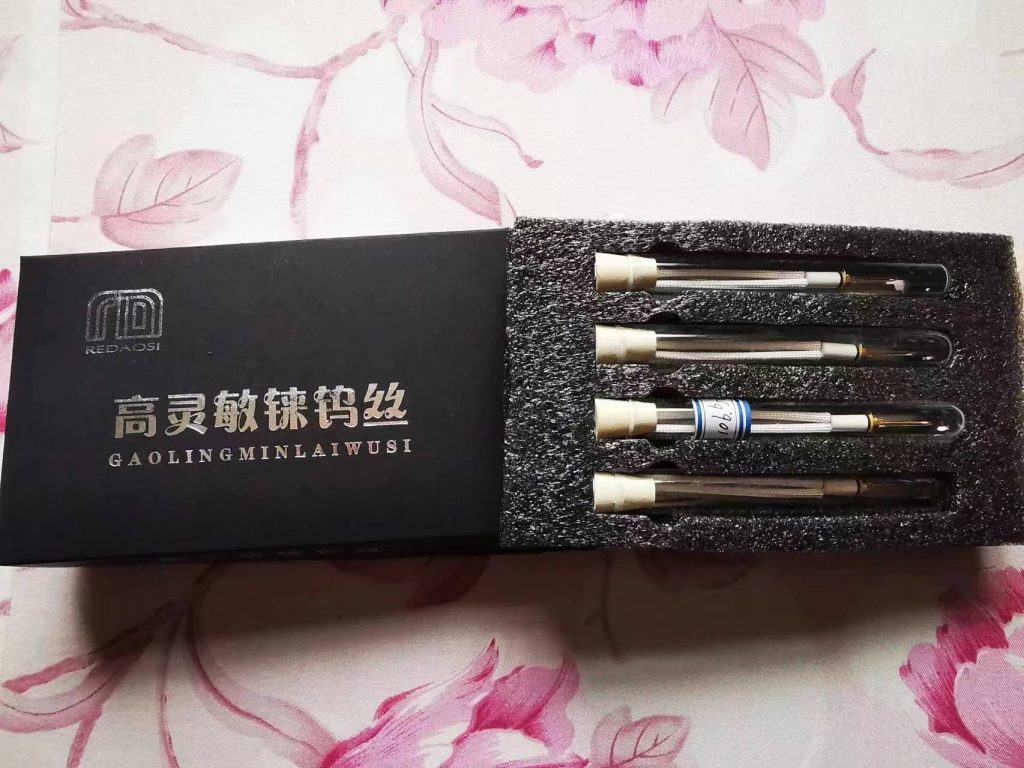
Introduction
TCD sensor filament is Gas chromatograph TCD detector use filaments’s kep spares.
material:tungsten rhenium
Single filament Resistance:100-150Ω (can be customized based on requirement)
if you need more info Please email to smtlabtech@163.com
The continuous presence of oxygen can damage the filament through oxidation. The most common source of oxygen is high oxygen content in the carrier gas or tail gas, or leaks near the detector. When the hot wire current is high, the damage caused by oxygen will be more severe. Chemical active sample components, such as acids and halogenated compounds, may damage the hot filament. Avoiding these compounds as much as possible will extend the lifespan of the hot wire. When TCD is not in use, turning off or significantly reducing the hot wire current can also extend the lifespan of the hot wire.
How Extending the lifespan of the TCD sensor filament:
If the following startup procedure is followed, the lifespan of the hot wire will be extended.
a. Before connecting the hot wire to the power supply, blow the detector with carrier gas and tail gas for 10-15 minutes. This can prevent the hot wire from being oxidized due to the presence of oxygen, as oxygen has already diffused into the thermal conductivity pool under no airflow conditions.
b. Turn on the hot wire current at the lowest possible current setting, and gradually increase the hot wire current to the desired value. This can reduce the power pulses generated by current introduction and extend the lifespan of the hot wire.
Any hot wire has a maximum withstand temperature, above which it is easy to burn. The temperature of the hot wire is determined by the type of carrier gas, bridge current, and cell temperature. If the thermal conductivity of the carrier gas is low, the bridge current and cell temperature are high, then the hot wire temperature is high, and vice versa